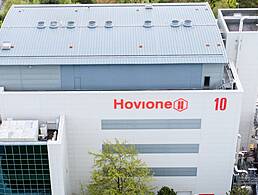Following the Government announcement amending the Covid-19 Wage Subsidy Scheme, EY’s Michael Rooney looks at what changed and answers some key questions.
The Temporary Covid-19 Wage Subsidy (TWS) Scheme took effect from 26 March 2020 and is set to run for 12 weeks under the administration of the Revenue Commissioners, but there are indications the scheme may be extended.
The aim of the scheme is to maintain employment by supporting employers to pay eligible staff through a Government wage subsidy.
The subsidy can be paid to employees on full-time, part-time, temporary and short-time work arrangements. There is no age restriction and the scheme is open to directors and cross-border workers working in the Republic of Ireland under an Irish employment contract where both meet the eligibility criteria.
What has changed?
It was acknowledged last week that, as the scheme was developed at speed, there are imperfections and anomalies. Changes announced on 15 April by Minister Paschal Donohoe, TD, attempt to address some of these anomalies but will only come into effect on or after 4 May 2020.
From this date, the amount of the subsidy payable will be determined by the employee’s average net weekly pay (ANWP) as follows:
- €350 or 85pc of the employee’s ANWP, whichever is less, for employees earning less than or equal to €412 net weekly pay
- €350 for employees with between €412 and €500 ANWP
- €410 or 70pc of the employee’s ANWP, whichever is less, for employees earning between €500 and €586 net weekly pay
For employees with an average net weekly pay of €586 or more, a tiered approach will apply, but further details on this have yet to be published.
The TWS is available to employees who earned over €76,000 pre-Covid-19 (in January and February 2020) and whose salary has now fallen below this level due to cuts. They will now receive no more than €960 net per week, subject to conditions.
Where the employee has received a reduction in their ANWP of more than 20pc, then a subsidy up to €205 can be paid. If the reduction is more than 40pc, a subsidy of €350 would be payable.
When first introduced, the TWS was to operate in two phases, a transitional phase and then an operational phase.
The transitional phase was intended to run to 20 April, during which time Revenue would reimburse the employer €410 for every employee for whom the subsidy was claimed. Following last week’s announcement, this phase is now expected to run until 3 May, with the operational phase commencing on 4 May.
How can a business prove itself eligible?
To qualify for the TWS, the employer must demonstrate to Revenue a minimum of 25pc decline in turnover or customer orders. Revenue acknowledges that this may not neatly apply to every business structure but has provided some general guidelines.
Different business lines within the same employer or a group structure which are independent and identifiable can be separated and looked at individually to determine whether the 25pc test will apply. Only employees of the impacted division will qualify for the TWS, provided they meet the eligible employee conditions.
For a group structure which overall forms the business, all companies within the group can also be looked at as a collective.
To assess the impact, companies can engage with Revenue to agree an alternative reasonable equivalent to turnover or customer sales.
What if decline in business turns out to be less than 25pc?
Revenue has confirmed that the business must self-assess the position and act in good faith in meeting the qualifying criteria. Therefore, where an organisation completes its forecasts for the relevant period and expects to meet the TWS eligibility conditions, by acting with the best information available now and with the intention to maintain employment in the business, the employer has acted in good faith in assessing the impact on the business.
If the business has an upturn in May or June and no longer meets the 25pc decline in turnover, Revenue has advised they will not seek to reclaim subsidies already paid out provided the employer can support the self-assessment was made in good faith.
What is average net weekly pay?
To calculate average net weekly pay, the employer must take the employee’s gross pay and subtract income tax, USC and employee PRSI paid for January and February 2020. Gross pay accounts for all payments including a 2019 bonus, notional values for non-cash benefits (ie company car, health insurance) before any employee pension deductions or deductions for salary sacrifice.
This figure is then divided by the number of insurable weeks (capped at nine) for the period.
What about top-up payments?
If the employer has cash reserves that are not required to service debt, Revenue has indicated that it expects such businesses will make a top-up payment in addition to the subsidy to keep the employee on or as close to their take home pay before the pandemic.
Employers cannot be compelled to make a top-up payment but, keeping in mind the purpose of this scheme, if an employer is availing of the subsidy and has cash reserves, it is recommended that a top-up payment is made.
The total of the subsidy and the top-up payment cannot exceed the employee’s average net weekly pay. If so, for every euro in excess, Revenue will claw back a euro of the subsidy refunded to the employer.
Any top-up payment must be entered into the payroll record as gross pay, meaning the amount will be subject to income tax and USC, therefore reducing the value received by the employee.
For most employees with net pay of €660 or less, existing tax credits should cover any tax due on the top-up payment and the USC deduction is minimal. However, for top-up payments to preserve net pay above this amount, tax and USC deductions will reduce the amount received by the employee. If the employer increases the top-up payment to cover the gap, part of the subsidy refunded to the employer will be clawed back.
What about laid-off employees?
Employees previously laid off due to the Covid-19 pandemic can be re-hired and, provided they meet the eligibility conditions, will also qualify for the TWS.
However, if the employee was not on the payroll as of 29 February 2020, then they will not qualify.
How will the tax on the TWS be collected in the future?
As the subsidy is a taxable payment but the tax has not been collected from the employee through the payroll, employers have a responsibility to communicate to employees where the subsidy has been paid to them, as Revenue may seek the tax due from the employee in the future.
Revenue has advised it will look at whether to collect the tax due on the subsidy payments at the end of the year, at which time it will need to assess the position of the economy and taxpayers’ ability to pay the tax due.
However, it is not expected that an individual will get a tax bill and a demand for immediate payment at the end of the year. Revenue has a number ways in which to collect the tax such as offsetting employees’ tax refunds for 2020 and future years against the tax liability due (refunds arising from qualifying health expenses etc), or reducing employees’ tax credits in 2021 and future years to collect the tax due through the payroll.
Why will Revenue publish a list of participating companies?
The reason for publication is transparency, so that employees will be aware where an employer has utilised the scheme to understand they are in receipt of a taxable payment for which PAYE has not been collected through the payroll, and challenge if the subsidy was not passed on to them.
Despite claims that publication is discouraging registration for the scheme, approximately 43,000 businesses, including high-profile companies, have registered to date and this number continues to rise.
The view within the Government is that employers availing of the scheme are being good corporate citizens and making best efforts to keep as many people as possible in employment.
Michael Rooney is a tax partner in EY Ireland’s people advisory services. His areas of focus include mobility, people agenda and employment-related activities.




